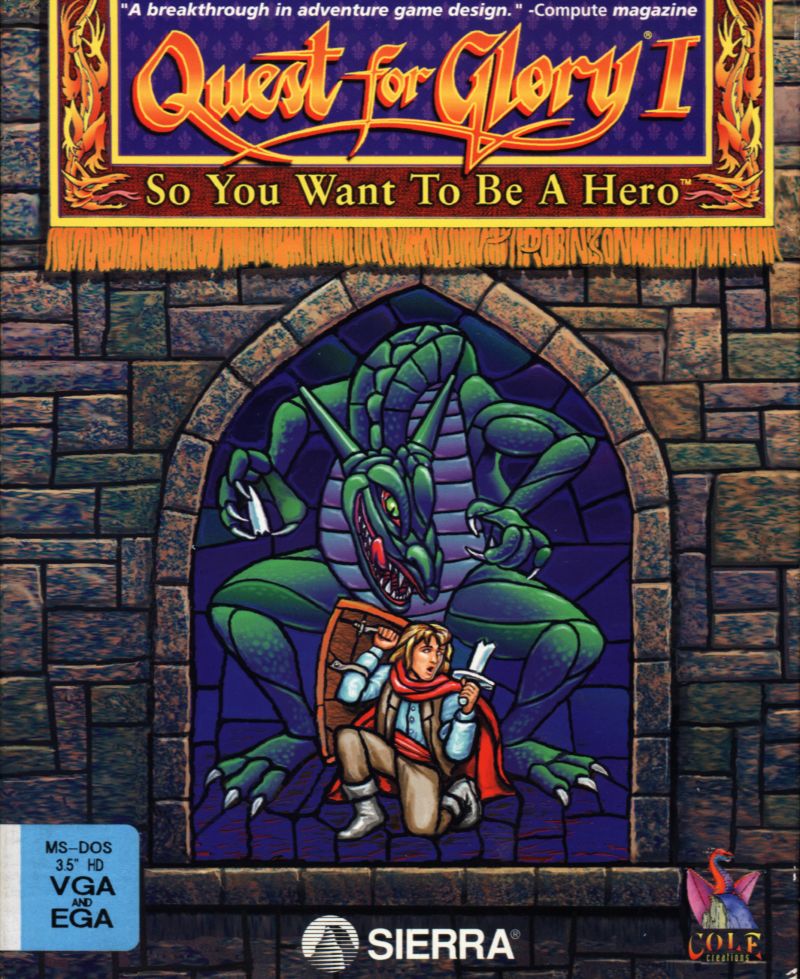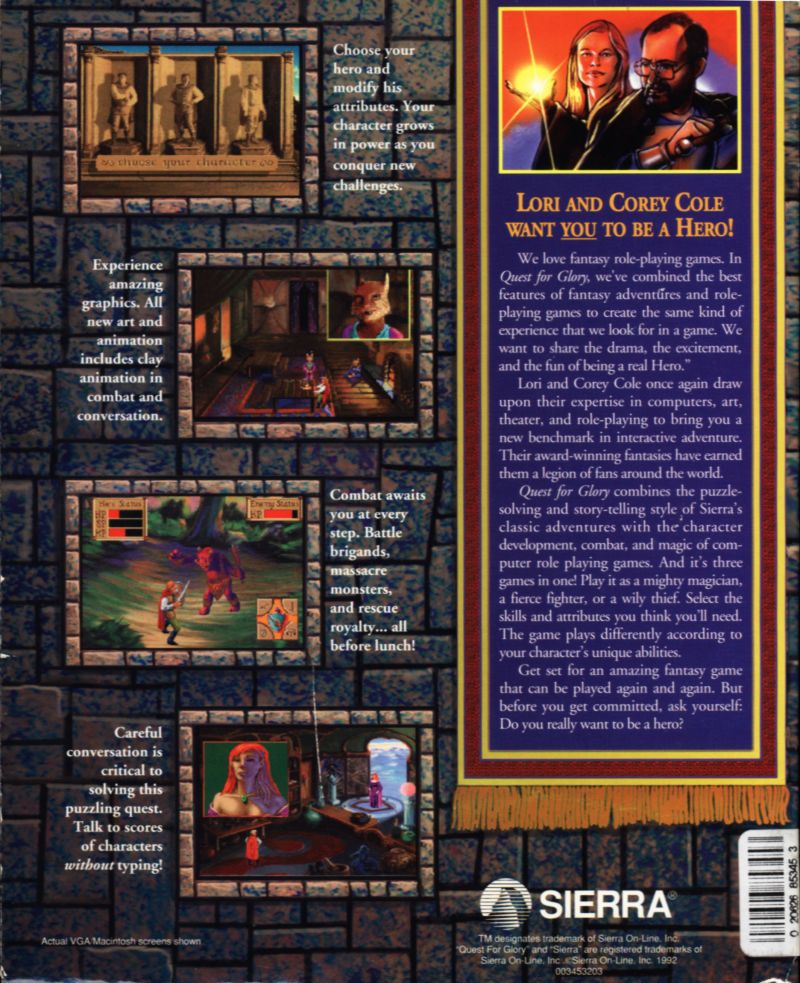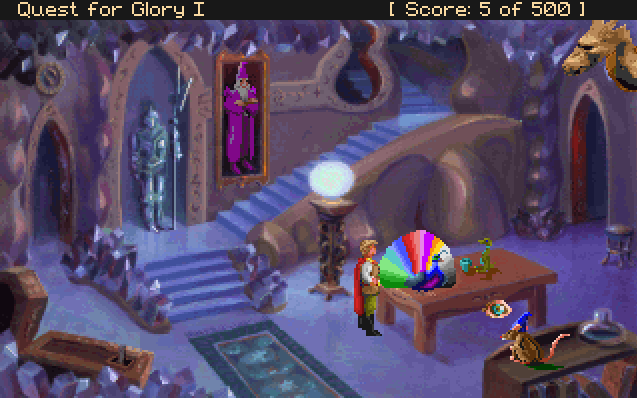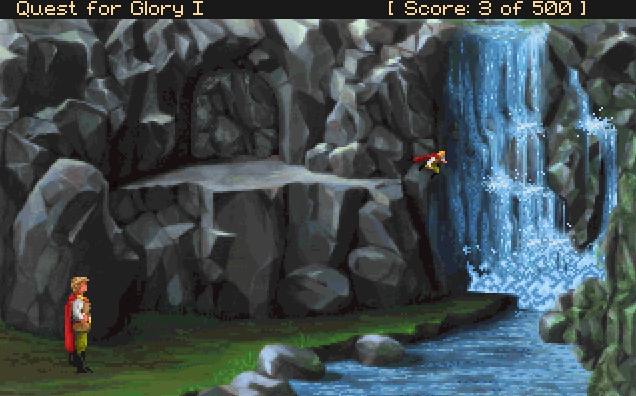Quest for Glory I: So You Want To Be A Hero is a remake of Hero’s Quest: So You Want To Be A Hero.
The remake features 256-color VGA graphics. Locations have been re-drawn, and character portraits appear during conversations. This version also has an icon-based interface instead of the text input of the original, very similar to the one used by Sierra for their adventure titles. The player selects dialogue choices from a dialogue menu, as opposed to typing in conversation topics in the earlier release. A few changes have been made to the dialogue, adding (or altering) some of the easter eggs and references to other games.
Combat now features clay models for the enemies and stop-motion animation. The perspective has been switched to an over-the-shoulder view farther away from the player. Battle commands (two types of attacks, parry, and dodge) are displayed as icons on a shield in the corner of the screen. The player can switch to the spell menu at any time, and also click the middle of the screen to escape from combat.
The little town of Spielburg is populated mostly by beer-drinking humans and some centaurs who like working in the field. Spielburg is surrounded by forests and mountains, where all kinds of weird creatures dwell: ogres, goblins, talking foxes, stupid magicians, and others. Lately, Spielburg has been assaulted by brigands; besides, the witch Baba Yaga is not to be trusted. The town has everything it needs–even a Thieves Guild–except a strong, brave hero who would protect it. So when a wandering adventurer enters the town, he quickly realizes that his skills might be of use.
Hero’s Quest: So You Want to Be a Hero is a hybrid game that contains Role-Playing and Adventure elements. It is visually very similar to other Quest titles by Sierra (such as for example Space Quest), but the gameplay–besides the usual exploration, conversations with characters, and the solving an occasional puzzle with the help of inventory items–also involves combat and character development. In the beginning of the game, the player chooses a character class for the protagonist–either a Fighter, a Mage, or a Thief. The choice of class will influence not only the combat, but also many other events in the game. Puzzles might have different solutions depending on the class and the amount of ability points in various categories.
The main character’s skills and abilities are raised directly by repeatedly performing appropriate actions, e.g. fighting enemies, practicing, climbing, throwing objects, etc. Many of those activities are necessary to perform in order to successfully complete the game. Combat takes the player to a separate screen (represented by the enemy’s picture) and involves timed selection of commands such as Attack, Parry, etc. The interaction with the game-world is performed by typing verb commands or conversation topics.
The game features a day/night cycle, which also includes character schedules. The main character can get hungry and tired, so feeding him and getting some rest is essential.
Cover Art:
Screenshots:





